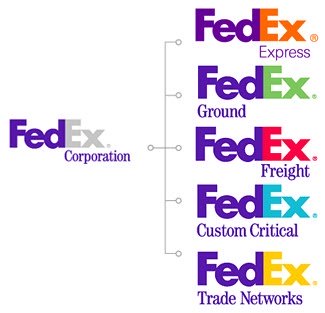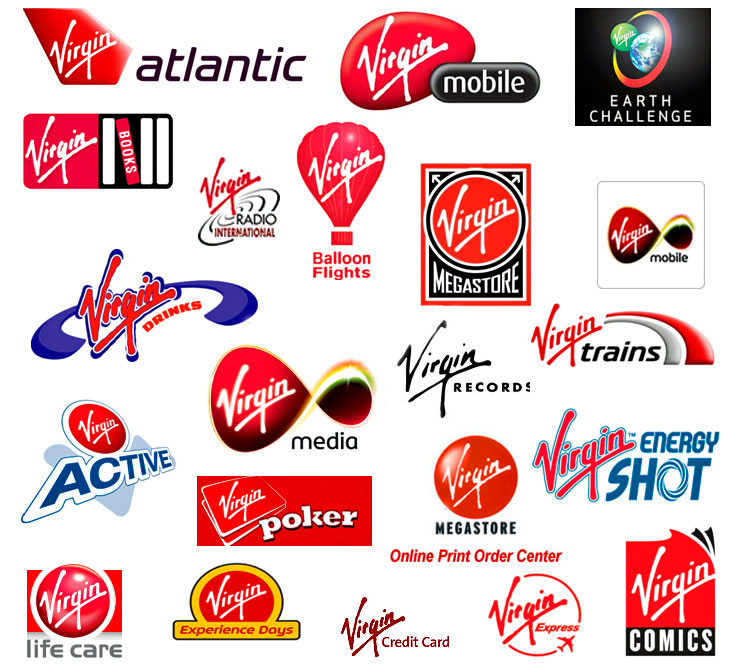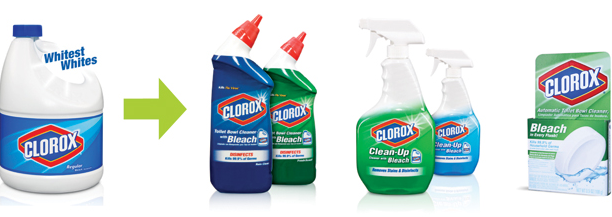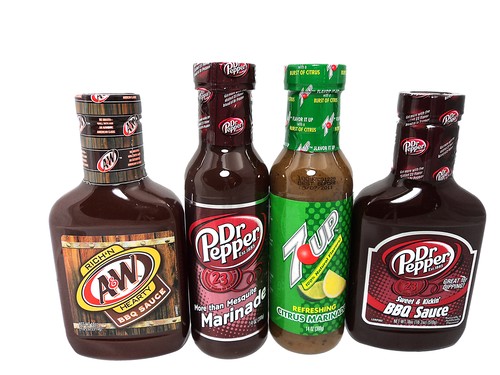If you’re in marketing, you may have heard the terms sub-branding and brand extension. But what’s the difference? Well, there’s a big difference. Let’s break it down.
What is sub-branding?
Sub-branding is when a main brand creates a subsidiary or secondary brand. (For example, Diet Coke or Nacho Cheese Doritos). Sub-brands are typically created as an opportunity to reach a new audience. Sub-brands can then build and sustain relationships with the new audience. This new brand’s attributes are distinct, yet related to the main brand. Sub-brands often have their own brand standards, logo, color treatment, etc. while some sub-brands reflect the same identity as the parent brand.
Pros of sub-branding: Successful sub-brands can help advertise and increase exposure for the parent brand. They help establish brand loyalty and trust. Consumers who trust a main brand are more likely to try a new product under the main brand. Take for example, Apple, Inc. Anytime Apple debuts a product, say an iPhone, iPad, iPod, etc. it capitalizes on the halo effect. People trust Apple as a brand and in turn trust the products they produce.
Examples of successful sub-brands
- FedEx: The FedEx Corporation created the sub-brands Express, Ground, Freight, Customer Critical and Trade Networks. These sub-brands’ identities were given a type and color treatment beneath the main brand logo.

Cons of sub-branding: Some disadvantages to sub-branding include the costs to market, promote and maintain the new brand. Sometimes, sub-brands can be unsuccessful. This failure can negatively impact the parent brand and affect loyalty, trust and business. Bad customer experiences can also lead to the tarnishing of the sub-brand and parent brand’s image.
Sub-brands may also require corporate restructuring to accommodate the new brand and its identity. There may be confusion between the main brand and sub-brand identity. This confusion contributes to the diluting of the main brand’s power and identity.
Examples of unsuccessful sub-brands
- Virgin: The Virgin Group has extended their brand multiple times. Starting as a record store, Virgin now has a presence in the healthcare industry (Virgin Health Bank, Virgin Care, Virgin Active), business industry (Virgin HealthMiles), communications (Virgin Mobile), financial services (Virgin Money) etc. However, there is confusion between the main brand and sub-brands’ identities. The color treatment, logo use and typography are not consistent. Multiple colors, type treatment and variations of the logo are used. The multiplicity of products across various business sectors adds to the confusion and negative reflection of the main brand. In 2012, Huffington Post named Virgin Mobile on their list of nine worst advertisements.

What is a brand extension?
Brand extension is when a brand in one category extends itself into another category. Often times this occurs when a brand achieves success. Successful brands then venture into other areas their brand could potentially fit.
Pros of brand extension: Upon success of the initial brand, other areas the brand could explore would have to be strategically calculated. As Brand Packaging notes, a brand’s fit and leverage are key to successful brand extensions. Recognizing another category your brand may fit is only half of the strategy. Leveraging how to market the new category is the other half of the equation. Brands need to identify the advantages of a new category as well as how this category will bring success to the brand.
Another advantage would be that brands do not need to spend money on rebranding. Most brand extensions use the same brand standards of the parent brand.
Examples of successful brand extensions
- Clorox: Traditionally a laundry disinfectant, Clorox has extended itself into other categories, such as disinfecting wipes, disinfecting spray, dust wipes, bleach crystals, toilet bowl cleaner, bleach packs, toilet wands, stain remover, bleach pens, etc.

Photo by Brand Packaging
Cons of brand extension: Sometimes brands extend into areas that are not natural fits. Other times, brands keep extending without rhyme or reason. This causes confusion around the parent brand. Like sub-branding, brand extensions can be expensive. Additional costs will be needed to promote and maintain the new brand.
Examples of unsuccessful brand extensions
- Dr. Pepper Marinade: Recognized as a one of kind soda, this brand extended its platform into barbeque marinades. Unfortunately, this new product did not catch on and was taken off the shelves.

Here are five questions to consider before creating a sub-brand or brand extension:
If you market a brand and are considering sub-branding or brand extension, consider the following questions:
- Is this a natural fit for my business?
- Is there a demand for this new venture?
- Will it generate a profit for my business?
- Are there enough resources to determine brand standards, if needed?
- Are there enough resources to promote and maintain the new brand or product?
If you can confidently answer yes to all of the above, the next step would be to determine which makes more sense for your business: brand extension or sub-branding. Once this is determined, brands must still consult the pros and cons of sub-branding and brand extension before proceeding.
Feeling inspired? Perhaps it’s time for your brand to communicate more visually. Download our latest, free guide “Communicating with Visuals,” to learn how your brand can amplify their marketing.
























Hello.
Hello.
I am trying to understand why the Virgin examples above aren’t brand extensions rather than sub-brands as identified. It seems like going from a record company to an airplane company is the very essence of a brand extension rather than a sub-brand. Please advise & thanks for the article & examples. Very useful.
Hello Jacqueline
Hello Jacqueline
About Virgin examples, some of the new brand’s attributes are distinct to the main brand. If you look at its brand, They often have their own brand standards, logo, color treatment, etc. The purpose is to reach new targets.;
While Brand extension mostly the same brand standards of the parent brand. They just differ with some various categories. But they don’t aim new targets especially.
I think the different is very slight.
Hope it helps a little bit 🙂
Hi Jacquelyn and Robby,
Hi Jacquelyn and Robby,
Thank you for your comments. In the case of the Virgin example, you raise a good point. It could be viewed as a sub-brand or a brand extension. Regardless, it’s a great example of what brands should completely avoid.
The term sub-branding is
The term sub-branding is being hijacked and mis-used here to refer to different models or varieties within the brand’s home market, which have been around for centuries. Sub-branding proper refers to the brand entering a new market, but instead of (1) creating an entirely new brand (say Dockers before it was introduced), which is quite expensive because no one knows or trusts the brand, or (2) creating a brand extension (e.g., Levis Causal Wear), which is quite dangerous due to brand dilution of the original name in its home market (negative reciprocity or backlash effects as when Levis introduced Levis Suits in the early 80’s which hurt its jeans sales), we (3) enlist sub-branding in which we create a new brand consisting of the new brand name (e.g., Dockers) and its sub-brand producer, (e.g., Levis), leaving us with the brand, Dockers by Levis. The sub-brand is there to give credibility to the new brand and thereby reduce product introduction costs, increasing trust in the new brand throughout the channel while doing something that was probably not anticipated: reducing, relative to brand extensions (e.g., Levis Casual Wear), brand dilution from entering a different market (reduced negative reciprocity (backlash) effects). Once the new brand name has been successful for long enough, the sub-brand can be dropped, as was the case with Dockers which now stands on its own. The lesson lies in sub-branding’s ability to insulate the original brand in its home market from brand dilution.
Sub branding and brand
Sub branding and brand extension are both brand strengthening exercise. Sub branding is used when brand is entering in new market segment in the same product class. Say a dairy brand apart from milk launching ice cream, chocolates, cheese like products under brand. These products essentially fall under same product class. But if the brand launches a toothpaste, mobile or apprel, it will be called brand extension.
Read my book spectrum of branding strategies to be published soon.
Aravind
Hi Jacquelyn, I got confused
Hi Jacquelyn, I got confused there too! I also thought what Virgin did is a brand extension. Actually, I’ve also found another topic about branding boundaries. https://digitalbrandinginstitute.com/establishing-brand-boundaries/. It mentioned how other companies almost ruined their brands because of touching certain topics about religion, races, sexual orientation, etc.